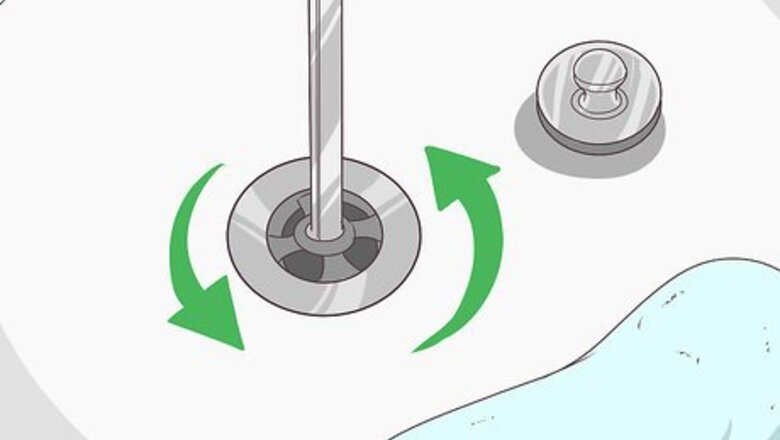
views
Clearing Clogs with a Plunger and Hook
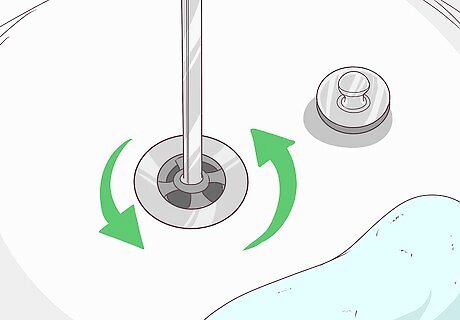
Remove and clean the drain cover if your bathtub has one. Lift the stopper as far out of the drain as it can go, then look for a small screw on its shaft. Most stoppers require a Phillips Head screwdriver to remove. Twist the screw counterclockwise until you are able to pull the stopper out of the shaft. Use a paper towel to wipe away any debris around the drain and stopper. If your drain doesn’t have a stopper, it might have a plug or a metal cover. Pull these out by hand to remove them, then clean them off as usual.
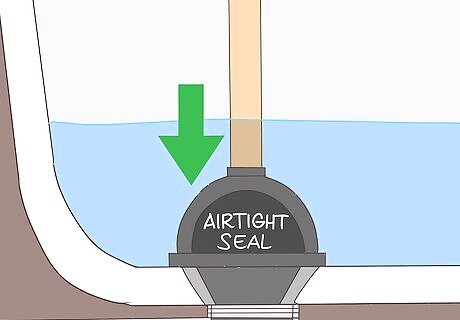
Cover the drain hole with a plunger. Get a plunger with a bell-shaped rubber cup on the end. Position the cup over the drain, then fill the tub with hot water until the cup is submerged. This allows the plunger to create an airtight seal over the drain and generate plenty of force to knock the clog loose. If your tub has an overflow drain, cover it with a wet towel. It is usually a round, metal plate underneath the faucet. It lets air escape, making plunging less effective.
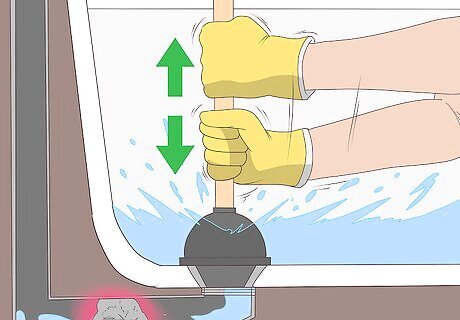
Plunge the drain quickly for up to 20 seconds. Push the plunger down gently at first so it adheres to the bottom of the tub. Then, move the plunger up and down at a strong, steady pace. After a few tries, remove the plunger to see if the water drains without a problem. If the plunger slips off the drain, stop and set it in place again. Keep it firmly attached to the tub floor to maintain the airtight seal over the drain.
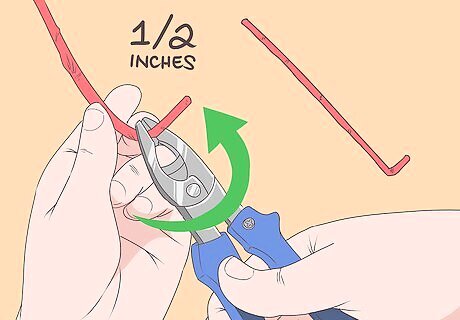
Bend a wire coat hanger into a hook if the drain is still clogged. To create a simple hook, use your hands or pliers to straighten out a wire hanger. Bend the end of the hanger into a hook about ⁄2 in (1.3 cm) wide, still capable of fitting down the drain. For an easier time reaching the clog, purchase a drain-clearing tool. Look for a drain snake or cable auger at a general or hardware store. For tougher, deeper clogs, try an electric version.
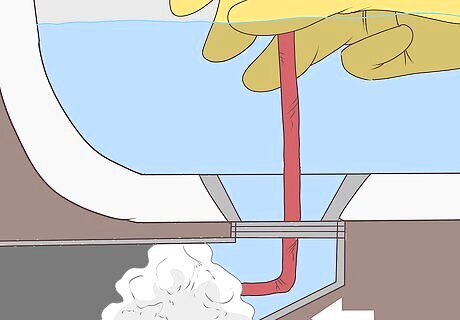
Insert the hook into the drain to pull out any debris. Before you begin, take a peek down the drain to see if you are able to spot the clog. Then, lower the hook down towards it. Use the end of the hook to latch onto the clog and lift it back out of the drain. To knock soap gunk off the pipe walls, rotate the hook clockwise. Let it cut through the caked-on material. You may need to use the hook a few times to retrieve all of the clog. Pull the hook up slowly each time and wipe it clean with a paper towel.

Flush the drain with hot water to remove the remaining debris. Use hot water only when flushing the drain. Boil water on your stove for extra drain-clearing power. Watch to see how quickly the water drains. If it is still slow, you may need to try using the plunger or hook again. If you’re sure you removed solid debris from the drain or weren’t able to see any, move on to soap or baking soda.
Using Soap and Hot Water

Pour about ⁄2 cup (120 mL) of liquid dish soap down the drain. Remove the drain stopper if you haven’t already so the soap gets inside the drain. Pour it in and wait for it to run down to the clog. The soap lubricates the pipe walls, making the clog much easier to remove. Any liquid dish detergent you have available will work.
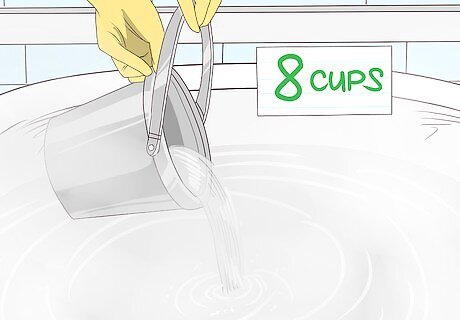
Flush the drain with a bucket of hot water. For the best results, boil about 8 cups (1,900 mL) of water on the stove instead of using hot tap water. Be very careful when carrying it back to the tub. Wear long sleeves and gloves to protect yourself. Then, pour the water down the drain gradually to force out the clog. Use boiling water only if you know you have metal pipes. Boiling water may weaken PVC pipe joints or crack porcelain. Use very hot tap water instead.
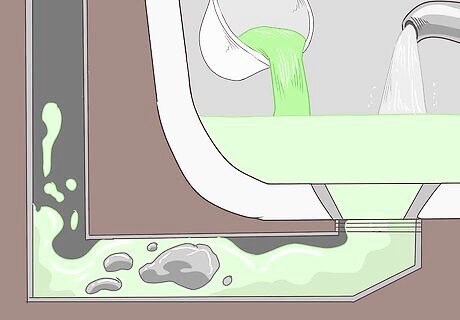
Repeat the treatment to clear up stubborn clogs. You may need to add more soap and water to loosen the worst clogs enough. Add more soap first, then slowly pour hot water in after it. If it works, the water will swirl down the drain as it normally would. Using a second round of soap and water eliminates greasy clogs from soap and oil.
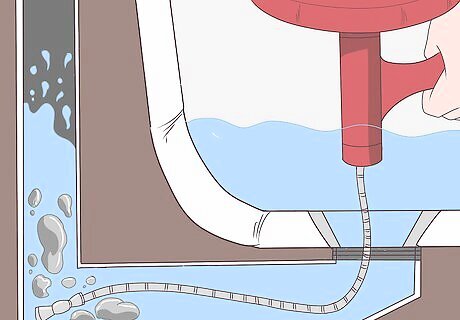
Snake the drain if it is still running slowly. Turn on the tap to check how the drain works. If the clog is still there, it may be loose enough to remove by hand. Open the drain cover, then push a wire hook or drain auger down towards the clog. Pull up as much hair or soap scum as you can before flushing the drain again with more hot water. Turn the drain-clearing tool clockwise while it is in the drain to knock loose any debris clinging to the pipe walls.
Cleaning with Vinegar and Baking Soda
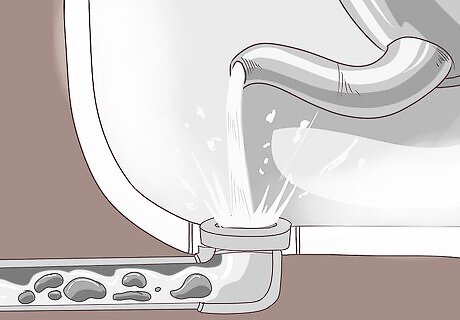
Pour a pot of boiling water down the drain. Heat about 8 cups (1,900 mL) of hot water on the stove. This is easy to do with a tea kettle or a sturdy pot. Make sure you cover your hands and arms before handling the liquid. Pour the water down the pipe slowly to loosen the clog. If you have PVC pipes or are treating porcelain, use hot tap water. Boiling water may weaken the pipe joints or cause cracks.
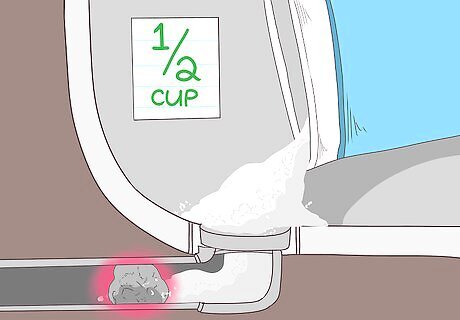
Add ½ a cup (90 g) of baking soda to the drain. Undo the stopper if it is still covering the drain. Most of them have a Phillips Head screw on the shaft you need to loosen to take them out of the drain. Carefully pour the baking soda into the open drain. Push as much of the excess powder into the drain as possible to ensure it reaches the clog. Removing the drain stopper, if your tub has one, is important, since you need to get as much of the baking powder down the pipe as you can.
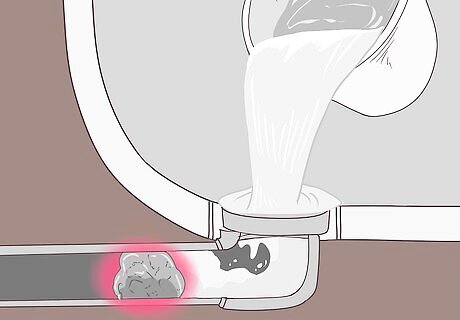
Pour ⁄2 cup (120 mL) of vinegar down the drain. Use basic, store-bought white vinegar to clear your drain. Mixing it with simple baking soda creates a hot foam. You will hear the mixture fizz as soon as the ingredients come into contact. Another way to do this is to combine the baking soda and vinegar in a measuring cup, then pour it into the drain at the same time.
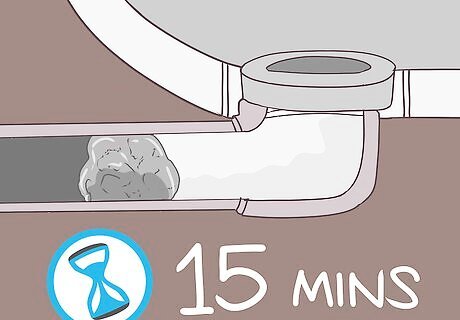
Allow the mixture soak into the clog for at least 15 minutes. Cover the drain with a towel so that the fizzy mixture can’t escape. Give it plenty of time to work its magic. If you are able, wait at least 1 hour before attempting to rinse away the clog.
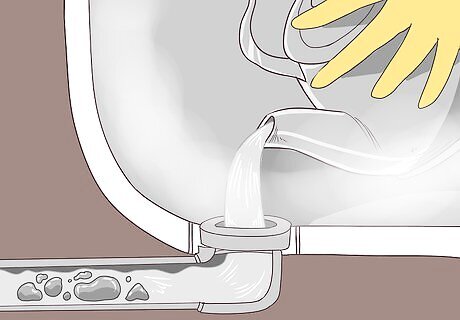
Flush the drain with another pot of boiling water. If you have metal pipes, heat up another 8 cups (1,900 mL) of water on the stove. Otherwise, run the tap to force the loosened clog out. When you’re done, test the drain by running water through it. Make sure the water drains freely. If the water continues to drain slowly, try using dish detergent, more hot water, and a drain snake. The problem may be a solid clog, like hair, that needs to be broken up manually.




















Comments
0 comment